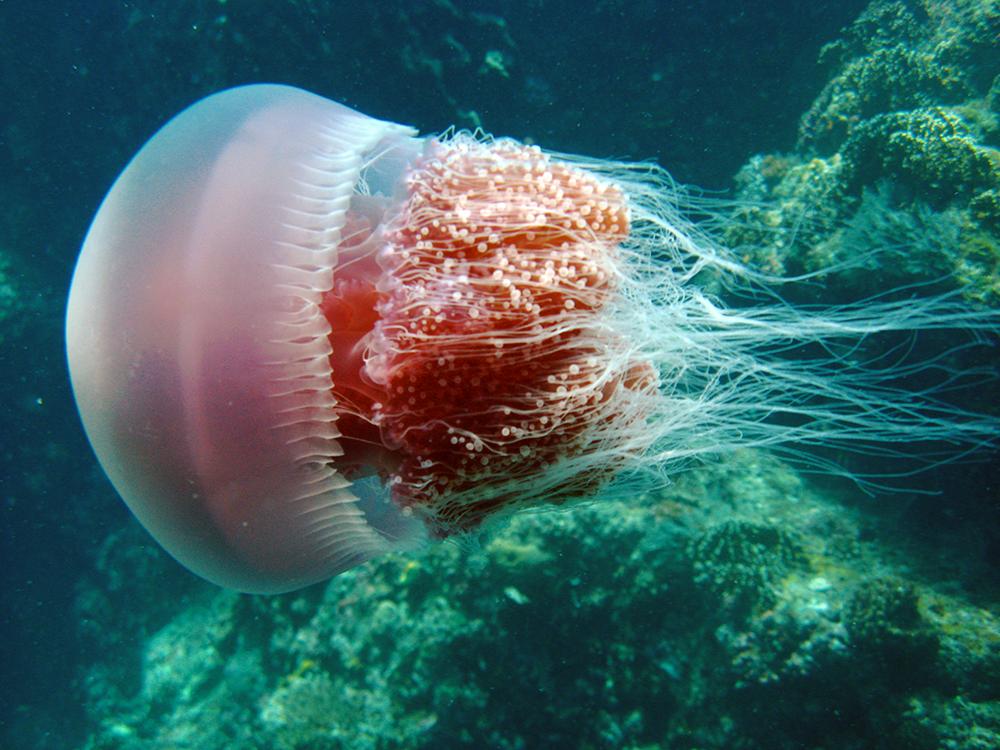
A surge in jellyfish populations has many fisheries experts concerned. But could we solve the problem by serving them up for dinner? UBC zoologist Lucas Brotz (BSc’ 00, MSc’ 11, PhD’ 17) explains why it’s not as easy as making jellyfish pie.
There are a lot more jellyfish in the ocean these days. Do we know why?
Overfishing is removing a lot of predators and competitors of jellyfish. Also, agricultural runoff and sewage, which create low-oxygen dead zones, kill many fish, but jellyfish can tolerate these conditions. Global warming is allowing the spread of jellyfish into areas that have been too cold for them, and perhaps increasing their reproduction. Coastal development also allows for jellyfish polyps to find new habitats around marinas and other infrastructure.
Why are jellyfish a concern?
They’re predators, and they eat some of the things we value—like fish eggs—and compete with fish for resources. Jellyfish can clog fishing nets and spoil catches, damage aquaculture operations, and even clog the intake pipes of power and desalination plants.
Do people eat jellyfish?
Jellyfish are consumed in many Asian countries, such as China, Japan and Thailand. The meat has no real flavour, it’s the sauces which make it tasty, and it has the texture of undercooked pasta or calamari. You do have to soak jellyfish in brine and dehydrate it to make it crunchier. The process uses chemicals which are bad for humans, so I wouldn’t recommend we eat too much jellyfish. Hopefully new processing techniques can reduce the use of these chemicals. However, having jellyfish once in awhile is not a problem.
So can we just eat more jellyfish?
You’d think if we can’t beat them, eat them, but we can’t fish our way out of the problem. Only a handful of jellyfish species, the ones that are more ‘meaty,’ are fished. Another problem is that jellyfish populations are extremely variable. One year you can get a huge bloom, another year there’s no jellyfish, so investments in infrastructure for jellyfish fisheries are tricky. There are even hatcheries in China, where they have begun to grow prized meaty jellyfish, but it’s doubtful that eating jellyfish will become popular in other parts of the world anytime soon. We may just have to get used to an increasingly gelatinous ocean.
Geoff Gilliard
gilliard@science.ubc.ca
604.827.5001
